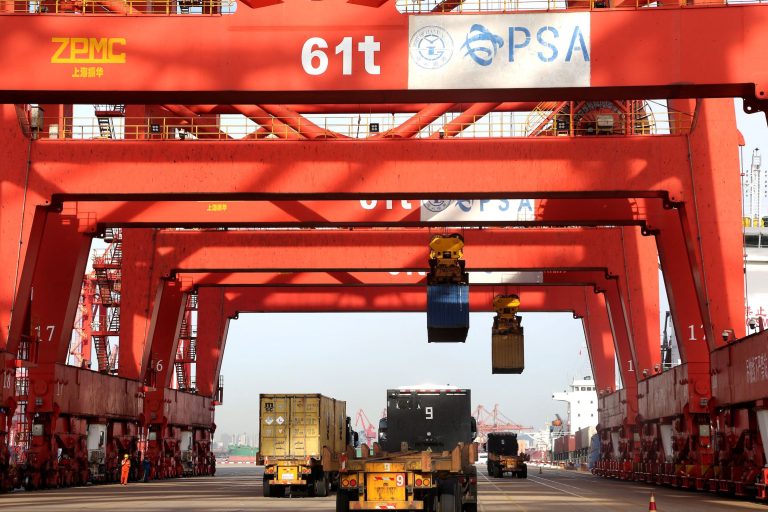Statistics for the month of May show that both China’s international trade and domestic consumption continued to drop, bringing the world’s second-largest economy closer to deflation and its attendant risks.
According to the People’s Republic of China (PRC) General Administration of Customs, the total volume of imports and exports in May was worth US$501.19 billion, or 6.2 percent less than May 2022. This total was just $560 million more than the import-export figure for April.
Both imports and exports fell year-on-year, while imports rose month-on-month (that is, from April to May). China’s May trade surplus fell by 16.1 percent year-on-year to $65.81 billion.
Compared with May 2022, exports to the U.S. declined by 18.2 percent to $42.478 billion, as did the value of products going to the European Union ($44.629 billion, down 7 percent year-on-year). Exports to the ASEAN countries of Southeast Asia also fell sharply in comparison to May 2022, dropping 15.9 percent to $41.49 billion this May.
The drop in those three 40-billion figures dwarf the rising exports to Russia ($9.268 billion, up 114.3 percent year-on-year), South Africa ($2.2 billion, up 5.7 percent), and the UK ($6.945 billion up 3.7 percent) — the three trading partners with which the PRC saw the greatest growth in exports.
Fading prices and consumer demand, rising debt risks
Success
You are now signed up for our newsletter
Success
Check your email to complete sign up
Meanwhile, efforts by the Chinese Communist Party (CCP) to resuscitate economic activity after the three years of “zero-COVID” lockdowns continued to fall short of official goals as Chinese citizens spend smaller amounts of money.
Authorities aimed for a rise of 0.3 percent in the consumer price index (CPI) compared with May 2022, but instead CPI only grew by 0.2 percent.
Year-on-year CPI growth in April was just 0.1 percent. Meanwhile, month-on-month changes in China’s CPI have been on the decline for four consecutive months.
READ MORE
- CCP Economic Meeting Spotlights Population Crisis
- Debt Traps in Action: Countries Paralyzed With Debt From ‘Sloppy’ Chinese Loans
- ‘The Suffering of the Chinese People Is Caused by This Evil Regime’: Chinese Quit the Communist Party
The producer price index (PPI) is declining even harder, reaching a 4.6 percent year-on-year drop this May and outdoing a Reuters prediction of 4.3 percent. It is the eighth consecutive month of PPI decline.
Such figures reflect long-term decreases in demand among Chinese consumers, as well as fewer profits for Chinese companies. Many Chinese firms are already struggling with the effects of the pandemic and lockdowns, supply chains leaving China, and unfavorable policies by foreign governments, such as U.S. bans on exports of advanced semiconductors to the PRC.
The declines in growth portend serious crisis for China and the CCP, as authorities across the country are finding it increasingly difficult to service the severe debts they built up over the years of rapid (and now slowing) economic growth.
Notably, local governments in the provinces of Guizhou and Yunnan have gone public with their debt crises, asking the central authorities for assistance. While these are some of the poorer provinces of China, financial contagion has, worryingly, also spread to wealthier areas; in late May, the municipal government of Wuhan publicly demanded repayment of debts from a list of over 250 entities, including state-run companies.














